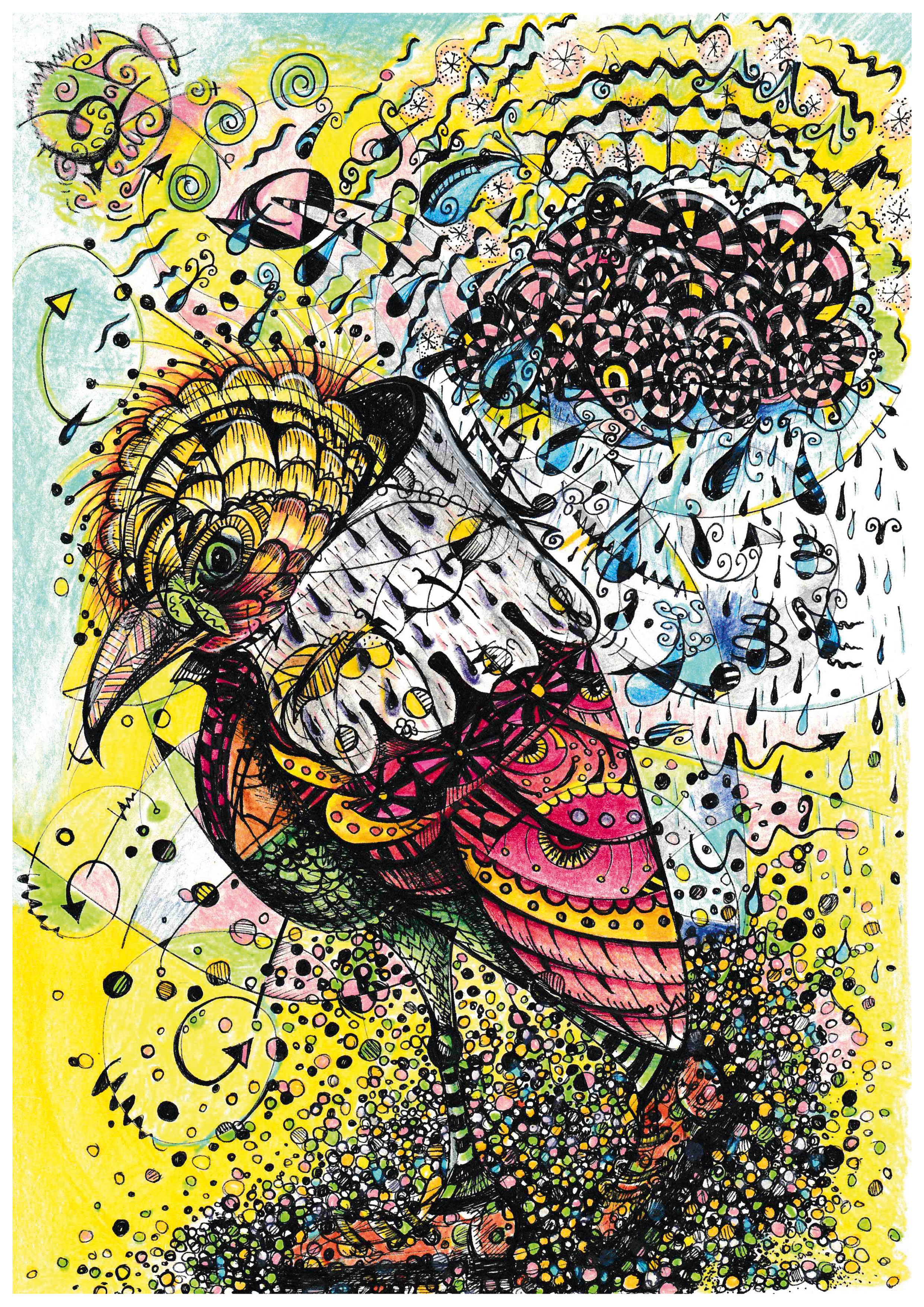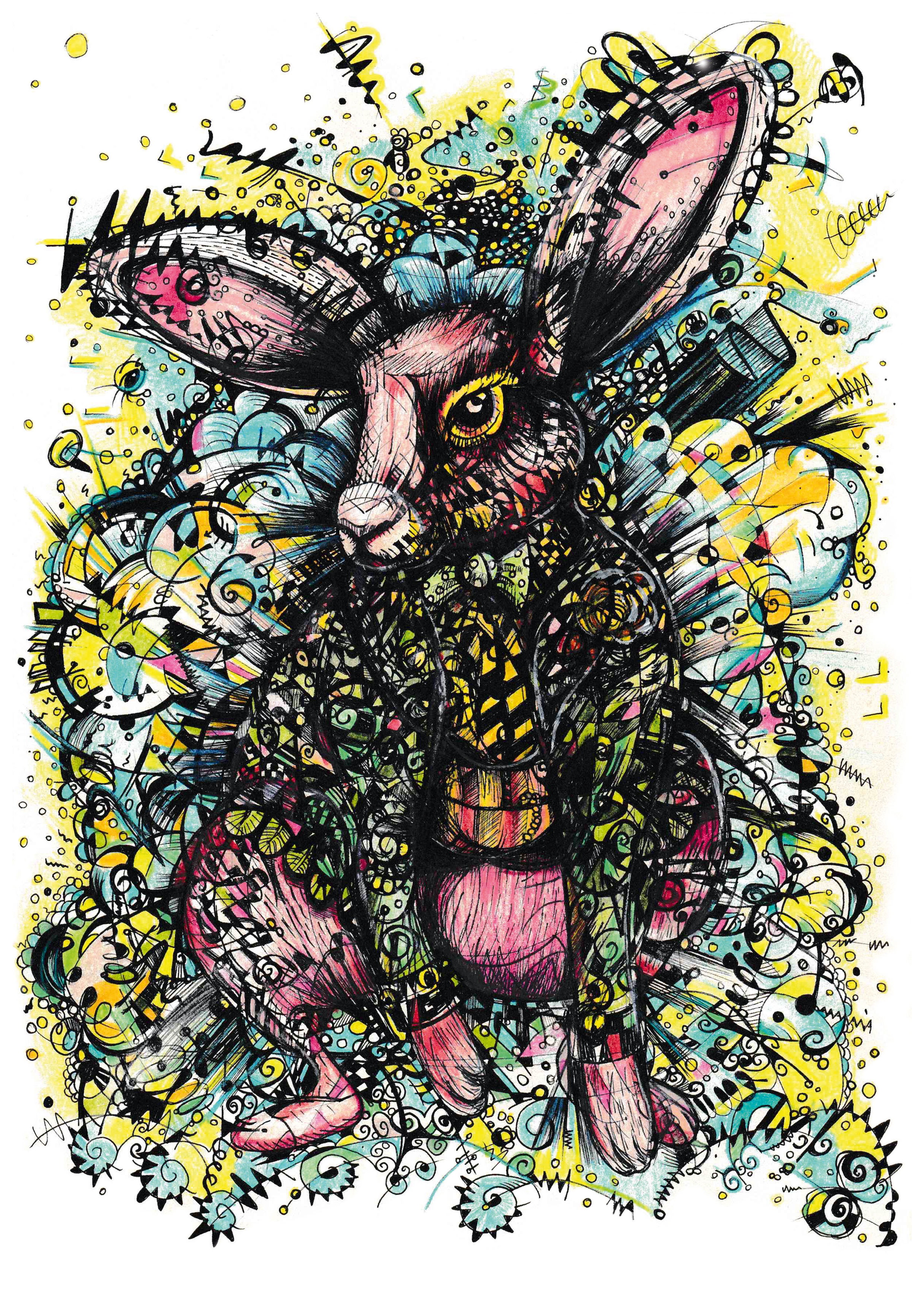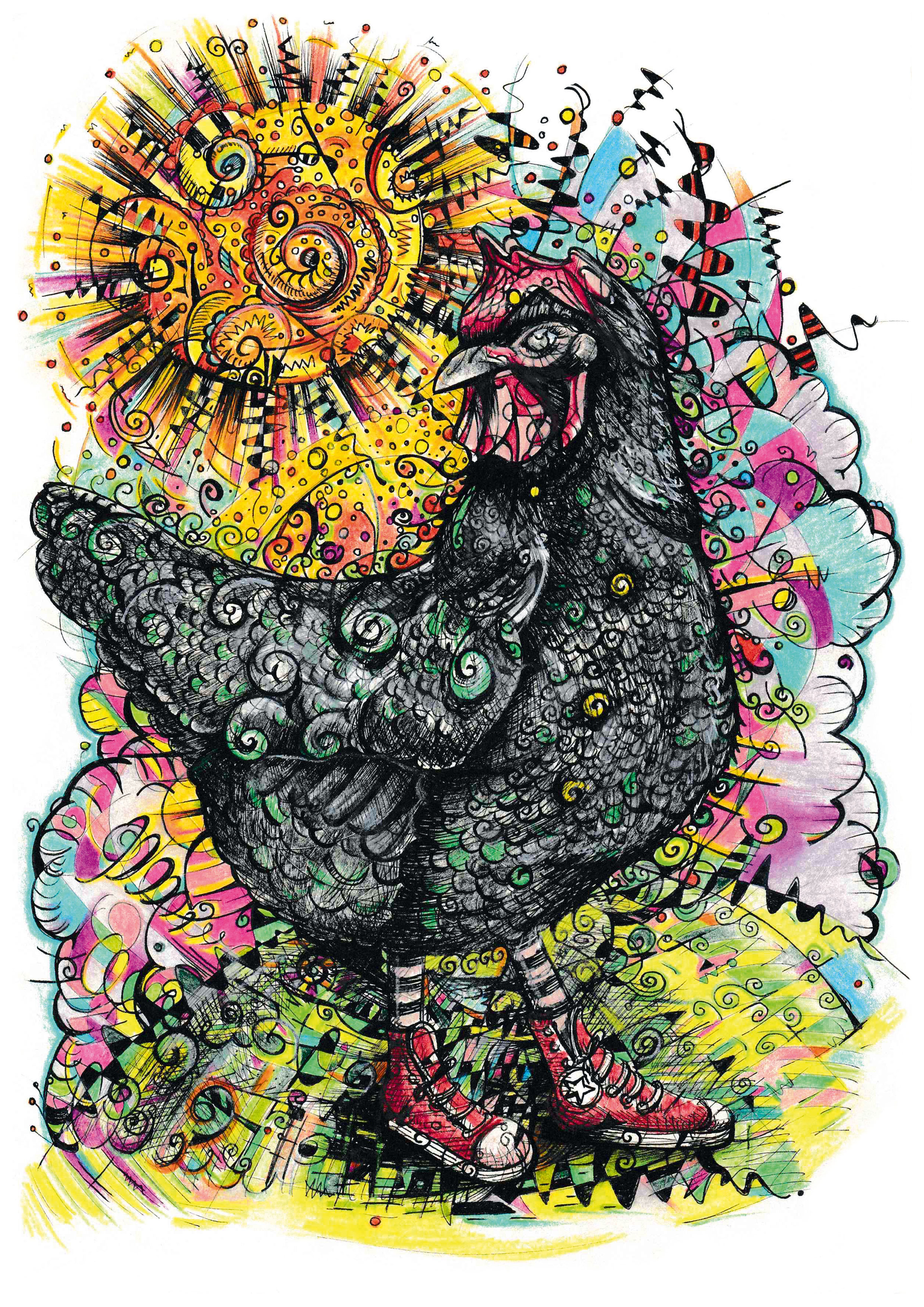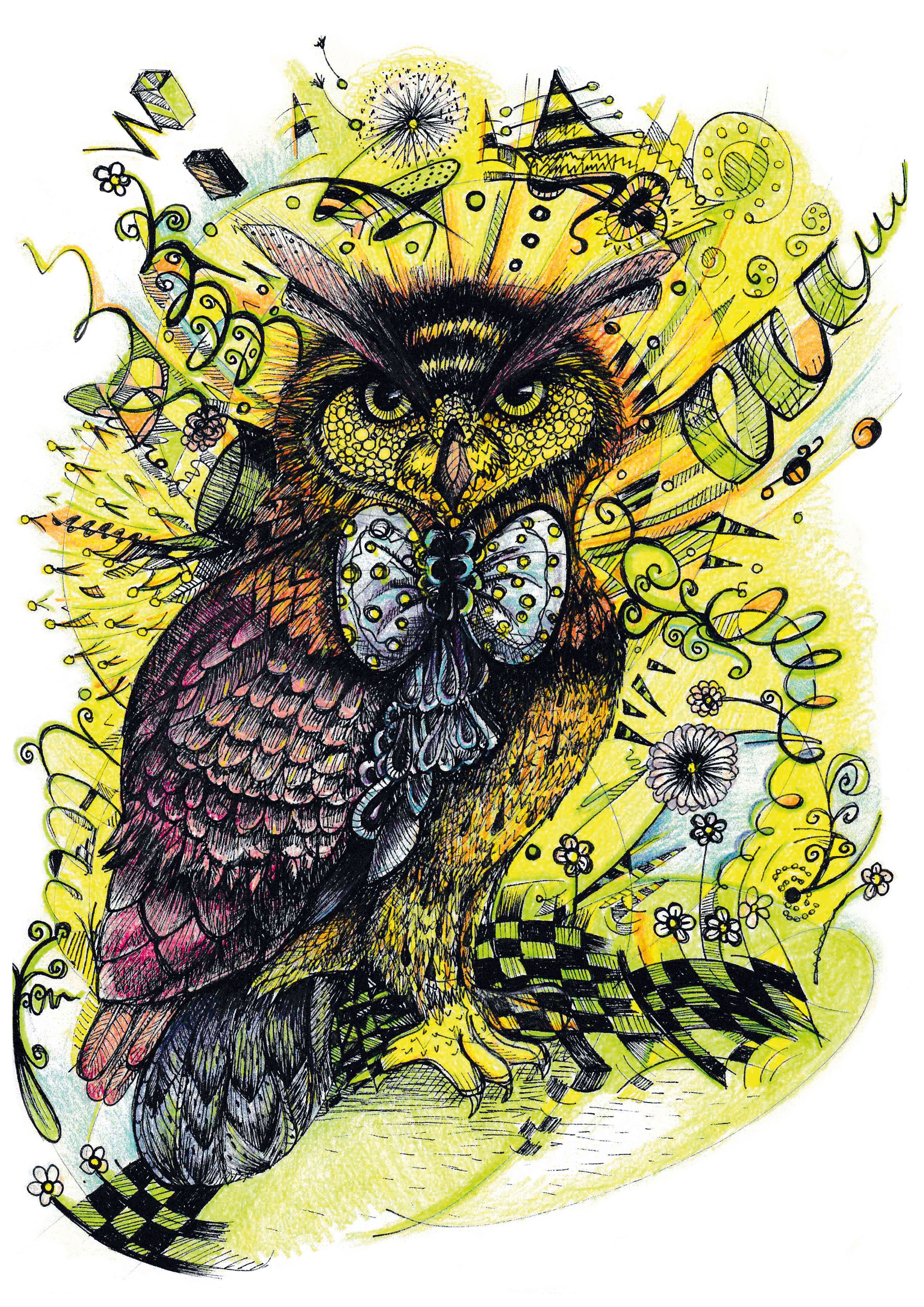My ‘Automatic Animals’ are a free flowing vivid blend of conscious and subconscious drawing techniques. I was attracted to the idea of creating art without conscious thought, to free myself from the idea that my drawings have to be precise and accurate. I wanted to fight my perfectionist tendencies and concentrate on the creative process more than the outcome. My aim was to forget the potential viewer and unburden myself from the constraints of expectation, to make marks and see where the led me.
Automatic drawing
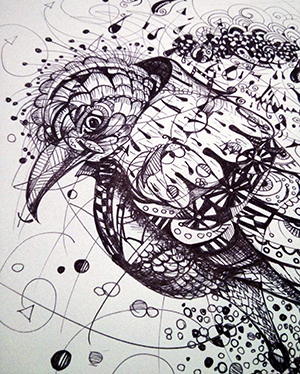 In psychology, “automatism” refers to involuntary actions and processes not under conscious control, for example, dreaming, breathing, or blinking. Automatic drawing (where the hand is allowed to move ‘randomly’ across the paper) has been practised for centuries by mediums and practitioners of the psychic arts and was a technique appropriated and developed by the surrealists. Since studying surrealist film for my Fine Art degree dissertation I have been fascinated by surrealist approaches to the creative process was was particularly compelled by the potential ‘automatic’ art could hold for creative discovery.
In psychology, “automatism” refers to involuntary actions and processes not under conscious control, for example, dreaming, breathing, or blinking. Automatic drawing (where the hand is allowed to move ‘randomly’ across the paper) has been practised for centuries by mediums and practitioners of the psychic arts and was a technique appropriated and developed by the surrealists. Since studying surrealist film for my Fine Art degree dissertation I have been fascinated by surrealist approaches to the creative process was was particularly compelled by the potential ‘automatic’ art could hold for creative discovery.
Whilst my intention was not to create surrealist art, I did want to utilise this particular technique to help me break down my personal creative barriers that were preventing me from truly enjoying the experience of artistic creation.
Purists like the French-Canadian group Les Automatistes‘ abandoned any trace of representation in their use of automatic drawing, however many surrealist artists have said their ‘automatic drawing’ was not completely automatic and required some form of conscious intervention to make the image visually meaningful. Most of the surrealists’ automatic drawings developed into drawings where representational forms suggest themselves.
Andre Masson said that his “‘automatic’ imagery involved a two-fold process of unconscious and conscious activity…” This approach aligned with my desire to loosen up my style whilst still creating appealing and meaningful images.
Let the lines flow
I chose to begin my drawings using the less ‘purist’ automatic drawing technique, applying chance and accident to mark-making. Then finding form in these lines and further developing them at the conscious drawing stage. This process required me to find a calm, almost meditative state where I cleared my mind to try and free myself of rational control to make random, flowing marks on the paper. I rapidly drew a number of initial lines, squiggles and swirls (sometimes with my eyes closed) then stopped and looked at what had materialised.
I take these drawings and start turing them around to look for any forms that seem to naturally appear. Often the paper would be upside down when I start to further respond to and develop the relationships between the marks. Once I have seen a possible image appear I might make some more marks take a step back and repeat until a basic but indistinct form takes shape.
Back to the conscious mind
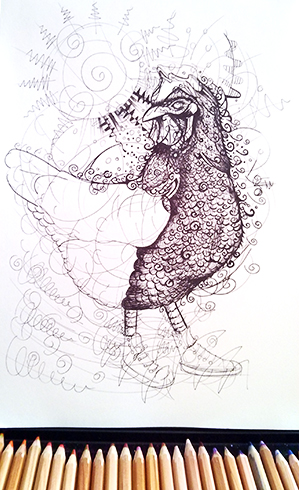 After identifying a form (usually animal) in the initial marks I start to create relationships between lines and to consider the character of the animal I’m now drawing. The animal I see is most likely influenced by my favoured species, such as birds, dogs, bears and rabbits.
After identifying a form (usually animal) in the initial marks I start to create relationships between lines and to consider the character of the animal I’m now drawing. The animal I see is most likely influenced by my favoured species, such as birds, dogs, bears and rabbits.
At this point some of the drawing is deliberate, some more random. For example Nando unintentionally got striped legs because of the ‘automatic’ lines which cut across the deliberately drawn legs. From striped legs I instinctually added the red converse boots and Nando became an unconventional chicken, proud of his own identity and questioning of authority.
With a character/personality in mind this influences the direction of the drawing, creating a story and context in which to place the animal. I try to keep to the automatic lines as much as possible as I want to avoid being brought back to my default ‘perfectionist’ state where ‘inaccurate’ drawings aren’t ‘good’. It is important to the process to keep the sense freedom alive, unrestricted by what something is ‘supposed’ to look like.
Definition through colour
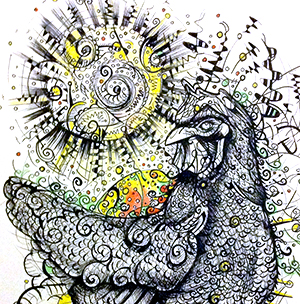 With such a detailed drawing colour brings vibrancy and visual definition to the forms. I considered leaving these as purely ink drawings, but I felt colour added to the flow, rhythm and impact of the finished piece . I used watercolour pencils to give me the control I needed to get fill in the detail. To harmonise the image each colour appears on both a large a small scale throughout the image. For example the yellow of the sun in the Nando drawing is not constrained to the sun area, other areas throughout the image are also highlighted with the same colour.
With such a detailed drawing colour brings vibrancy and visual definition to the forms. I considered leaving these as purely ink drawings, but I felt colour added to the flow, rhythm and impact of the finished piece . I used watercolour pencils to give me the control I needed to get fill in the detail. To harmonise the image each colour appears on both a large a small scale throughout the image. For example the yellow of the sun in the Nando drawing is not constrained to the sun area, other areas throughout the image are also highlighted with the same colour.
The collection
